From groundbreaking materials to robotics that made sci-fi look outdated, BAU 2025 had it all. With Schueco leading the charge, the event became the ultimate playground for global and Indian architects, where innovation met collaboration, and the future of design was written in real time
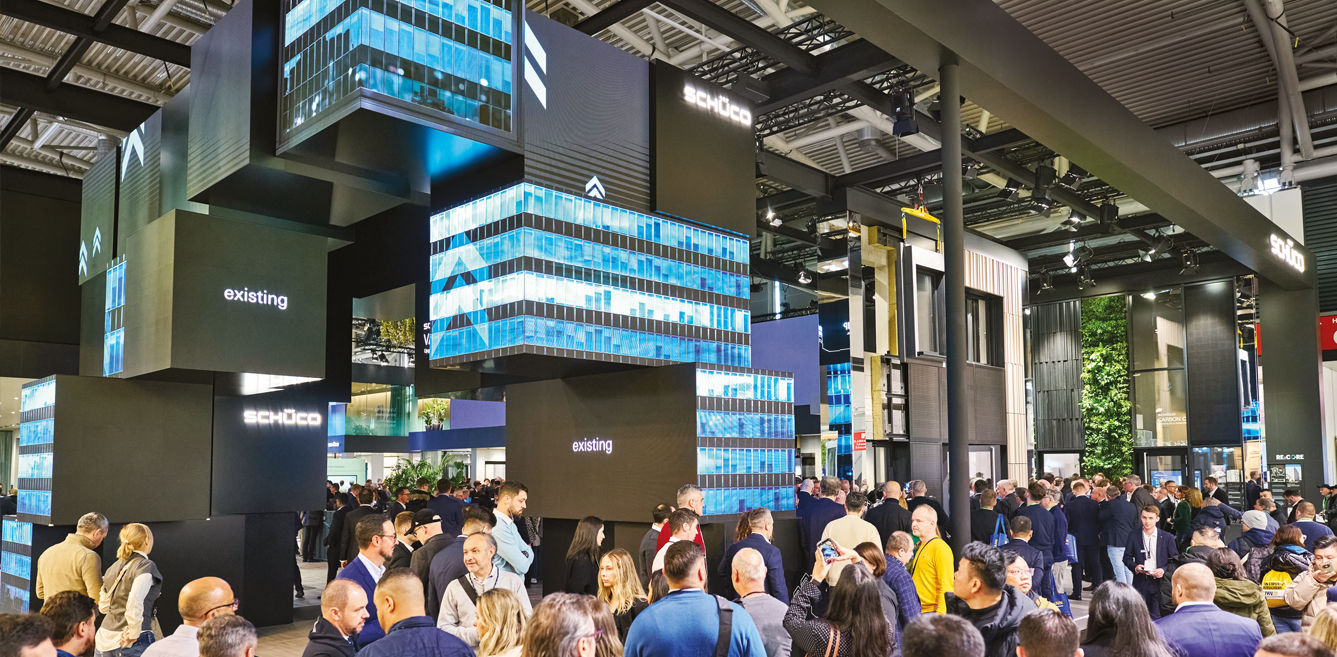
MUNICH, Germany — Braving the icy chill of minus-6 degrees, architects and designers from across the globe converged at the sprawling Messe München for BAU 2025, the renowned international trade fair for architecture, building materials, and construction, held from January 13 to 17, 2025. With over 2,000 exhibitors representing 45 countries, this flagship event transcended the traditional trade fair format—it served as a vibrant manifesto for the future of architecture and design.
As BAU 2025 unfolded, themes of sustainability, digitalisation, and modular construction resonated through its expansive halls, while the Indian delegation brought a dynamic energy, seamlessly blending expertise with a spirit of exploration. For the architects in attendance, the fair was more than just a platform to explore cutting-edge technologies—it was a hub of global collaboration and inspiration. Yet, the event’s sheer magnitude could be overwhelming, presenting a marathon of ideas and innovations that demanded both curiosity and endurance.
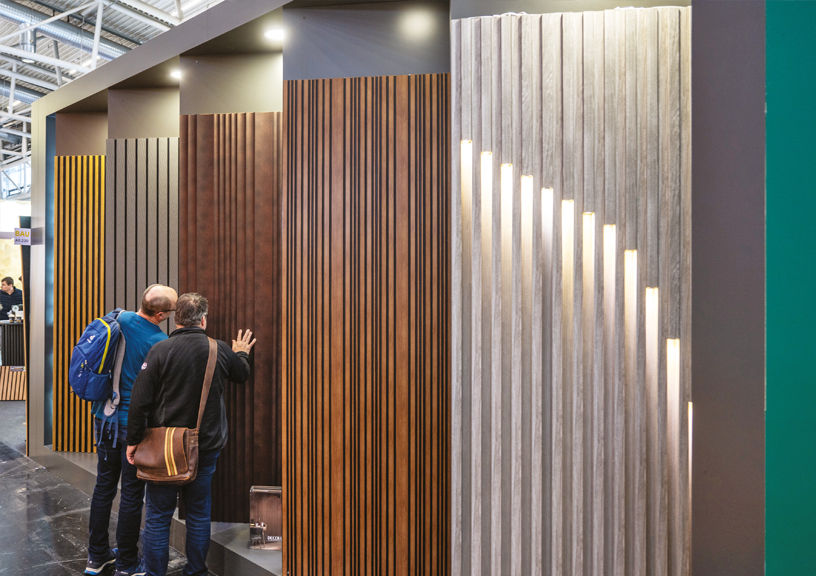
One such trailblazer was Ahmedabad-based Samarth Maradia, who, with his designer wife by his side, moved through the expansive fairgrounds with practiced ease. Armed with the BAU website folder on his phone and a meticulously planned itinerary, Maradia navigated the event like a seasoned pro, even sharing insider tips on using Munich’s public transport free of cost. His efficiency was matched by his curiosity, setting the tone for what lay ahead.
Not far away, Summesh Menon was drawn to advanced window systems, deeply admiring their craftsmanship and potential to elevate architectural design. Walking alongside him, Rupesh Baid was equally immersed, his discerning eye landing on bespoke metal hardware that led to the purchase of a custom-designed door for his latest project. Together, they showcased a perfect balance of appreciation and action.
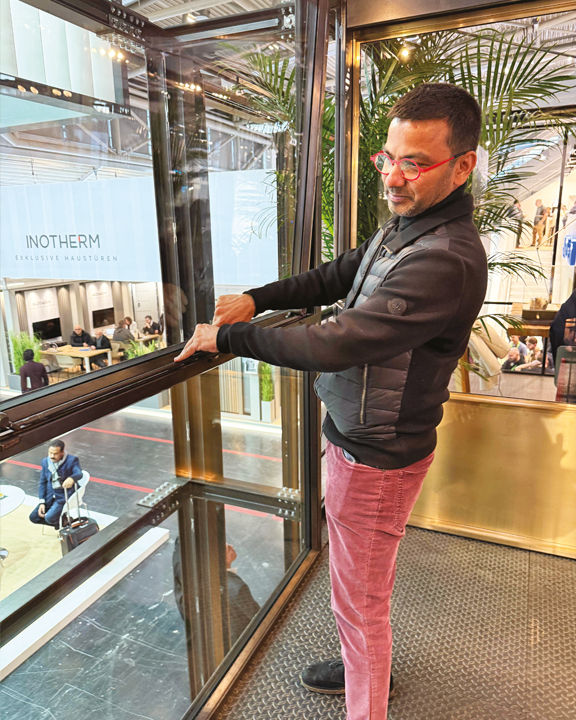
Elsewhere, Shiv Dada turned the sprawling Messe München into his personal networking playground. Flashing his signature grin, he remarked, “You can’t just walk through BAU; you’ve got to feel the vibe,” embodying the camaraderie that defined the Indian delegation’s presence. Meanwhile, Siddharth Talwar and Arun Sharma were deep in discussion over modular designs, treating the fair like a masterclass. While Talwar marvelled at the balance of practicality and aesthetics, he pondered how seamlessly these systems could be adapted to the Indian context. Sharma, in contrast, was awestruck by Schueco’s precise engineering, particularly their 12-millimetre fenestration systems capable of supporting 100-kilogram glass panels.
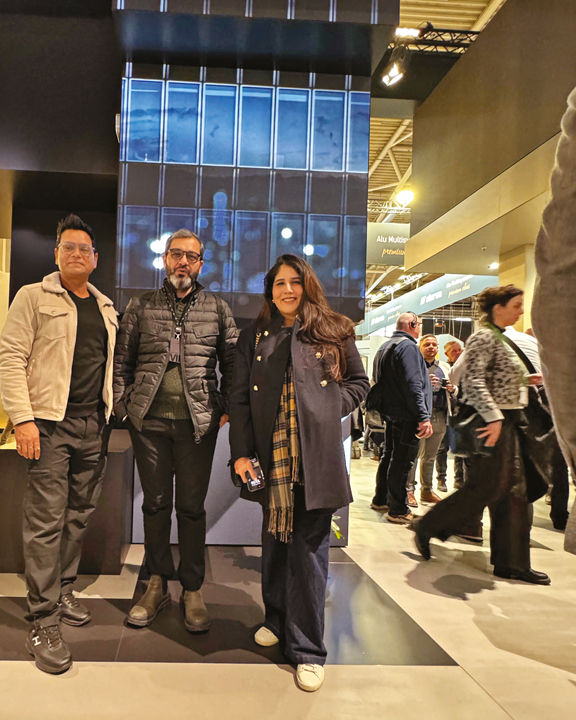
As the day unfolded, Sumit Dhawan found himself inspired by outdoor innovations, remarking, BAU allows us to think taller and wider—to understand fenestrations going up to 10 meters, which are not only manual but motorised as well.” Nearby, Rudraksh Charan explored Schueco’s sustainable retrofitting solutions, recognising immense potential for the Indian market. Reflecting on the intensity of the event, he joked that his survival strategy revolved around “a heavy breakfast and a beer instead of lunch.”
Adding another dimension to the delegation’s experience, Indrajeet Kembhavi juxtaposed his exploration of cutting-edge solar façades with a visit to the timeless BMW Museum. “It’s a marvel of both engineering and architecture,” he noted, a reminder of how BAU merged the past and the future in its offerings.
Schueco: Redefining Innovation
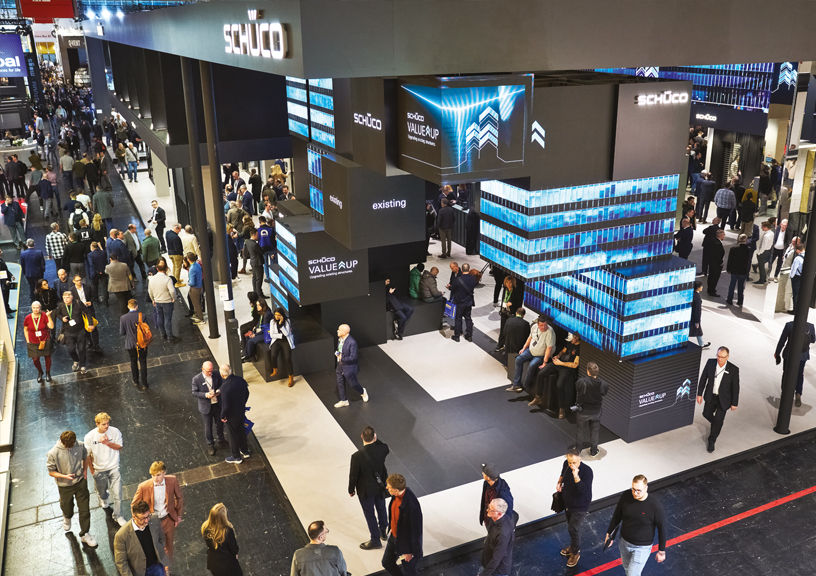
Among the dazzling exhibits, Schueco’s pavilion emerged as a standout. From a separate entrance and thoughtfully curated meals to branded coat racks and seamless transport services, the experience was nothing short of exceptional. “If you weren’t invited by Schueco, you didn’t get the real experience,” attendees joked, underlining the brand’s influential presence at the fair.
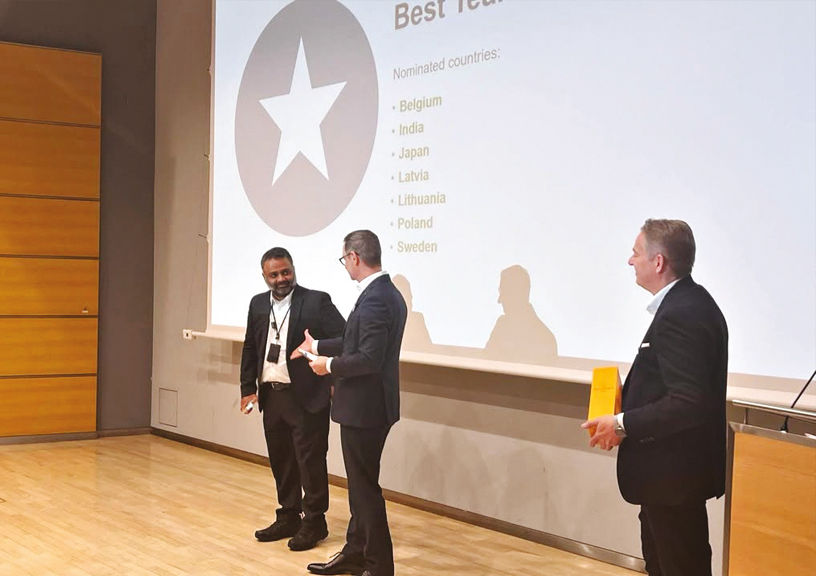
Shyam Raghunandan, managing director of Schueco India, reflected on the event’s energy and significance: “This BAU had a lot of excitement for us. We invited more than 60 architect partners and 60 fabrication partners. The Schueco India team was awarded the ‘Best Team’ in the global sales challenge, and I couldn’t be prouder. A big shoutout to all the tigers and tigresses—#OneTeam made it happen.”
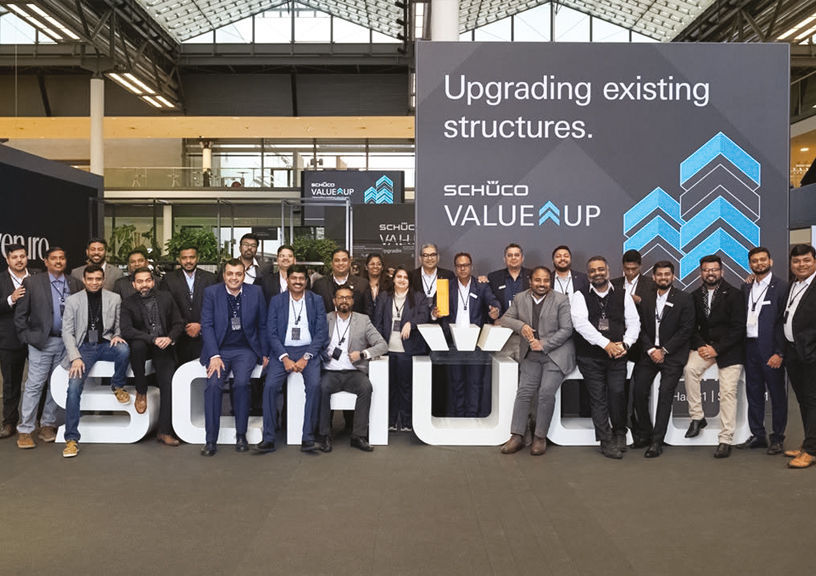
Raghunandan highlighted Schueco’s strategic focus on three pillars: “Design innovation—bringing global technology to Indian markets with customisation; digitalisation—leveraging technology to improve productivity and safety at job sites; and sustainability—aligning with India’s goals to reduce the construction industry’s carbon footprint.”
The launch of the Venuro System, designed for floor-to-ceiling sliding windows, became a talking point for its ultra-slim profiles and panoramic views. “This system redefines minimalism,” Arun Sharma observed. Similarly, the ValueUp Façade System resonated with Indian architects like Kembhavi, who called it “a strategy for sustainable urban development.” Schueco’s retrofitting systems earned high praise for their ability to align sustainability with innovative engineering. As Charan succinctly put it, “Schueco isn’t just reducing emissions—it’s reshaping how we think about architecture.”
Themes That Struck a Chord
BAU 2025’s themes—resilient urban planning, modular construction, and resource efficiency—struck a global chord. Renewable energy solutions like solar-integrated façades and retrofitting systems showcased by Schueco addressed the need to reduce energy consumption in both large-scale commercial developments and smaller community spaces. Emerging brands like Oakio complemented this vision with eco-friendly decking and cladding solutions, reinforcing a commitment to sustainability.
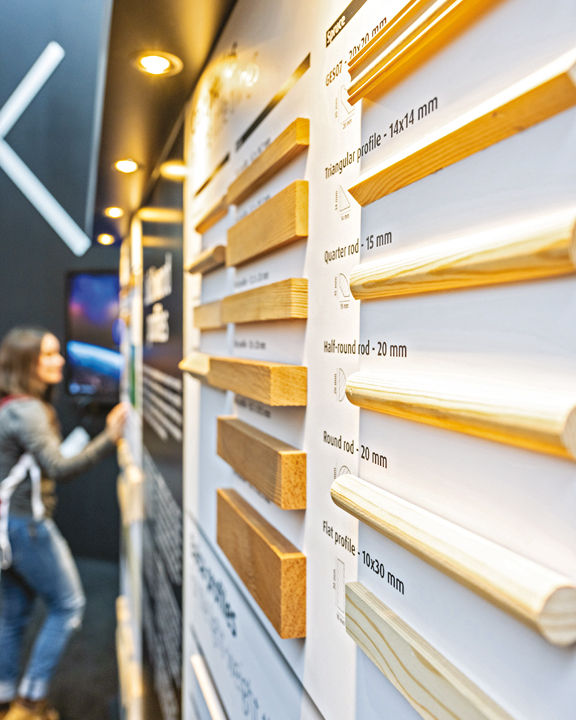
Modular construction took centre stage, with companies like Velux and Knauf presenting prefabricated components designed for affordability without sacrificing aesthetics. Climate resilience was another highlight, with materials from Kingspan and BASF addressing extreme weather challenges. Adding a layer of artistry to modular design, RECKLI’s formliners transformed concrete into textured masterpieces. Tying everything together was the emphasis on a circular economy. Innovators like Tarkett, Wienerberger, and Jowat SE pushed boundaries in recycled flooring, bricks, and adhesives, making sustainability a fundamental tenet of future construction.
Immersive Installations & Robotics
The exhibits at BAU 2025 were nothing short of immersive. From Schueco’s Innovative Pavilion to Velux’s Biophilic Hub and Knauf’s Sustainable Cities Pavilion, each installation was a vision of architecture blending technical innovation with artistic execution. Keynotes from luminaries like Carlo Ratti and Satoshi Ohashi bridged global trends with actionable insights, empowering attendees to embrace transformation.
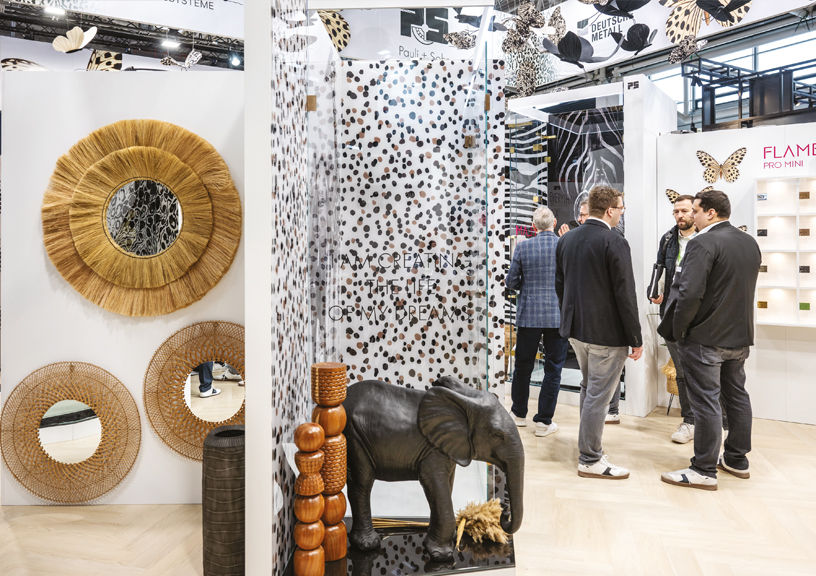
Robotics stole the show, offering a glimpse into the industry’s future. Autonomous 3D printers demonstrated their ability to create intricate structures, while drones showcased real-time site monitoring capabilities. A standout demonstration involved a robot creating intricate, load-bearing brick walls with geometric precision that would be nearly impossible to replicate manually. Additionally, drones equipped with imaging sensors and surveying capabilities demonstrated how technology is revolutionising the industry.
Closing Thoughts
As BAU 2025 concluded, it became clear that this was more than an architecture fair—it was a blueprint for the future. For Indian architects, the experience was as much about camaraderie as it was about discovery. Each interaction, each innovation, sparked fresh ideas and perspectives. Schueco’s trailblazing innovations, from the Venuro and ValueUp systems to their retrofitting solutions, reinforced their reputation as leaders in sustainable design. Shyam Raghunandan’s words encapsulated the event’s impact: “This BAU wasn’t just a showcase—it was a movement, a step towards reshaping architecture in India and beyond.” As the sun set over Munich’s skyline, BAU left attendees energised, ready to translate inspiration into action. For those who missed it, anticipation for BAU 2027 has already begun!
Also read here, The Year of Surreality: Maison et Objet 2025
